第45章 5(1)
In due sequence we have next to discuss the blood-vessels, that is to say the great vessel and the aorta. For it is into these two that the blood first passes when it quits the heart; and all the other vessels are but offshoots from them. Now that these vessels exist on account of the blood has already been stated. For every fluid requires a receptacle, and in the case of the blood the vessels are that receptacle. Let us now explain why these vessels are two, and why they spring from one single source, and extend throughout the whole body.
The reason, then, why these two vessels coalesce into one centre, and spring from one source, is that the sensory soul is in all animals actually one; and this one-ness of the sensory soul determines a corresponding one-ness of the part in which it primarily abides. In sanguineous animals this one-ness is not only actual but potential, whereas in some bloodless animals it is only actual. Where, however, the sensory soul is lodged, there also and in the selfsame place must necessarily be the source of heat; and, again, where this is there also must be the source of the blood, seeing that it thence derives its warmth and fluidity. Thus, then, in the oneness of the part in which is lodged the prime source of sensation and of heat is involved the one-ness of the source in which the blood originates; and this, again, explains why the blood-vessels have one common starting-point.
The vessels, again, are two, because the body of every sanguineous animal that is capable of locomotion is bilateral; for in all such animals there is a distinguishable before and behind, a right and left, an above and below. Now as the front is more honourable and of higher supremacy than the hinder aspect, so also and in like degree is the great vessel superior to the aorta. For the great vessel is placed in front, while the aorta is behind; the former again is plainly visible in all sanguineous animals, while the latter is in some indistinct and in some not discernible at all.
Lastly, the reason for the vessels being distributed throughout the entire body is that in them, or in parts analogous to them, is contained the blood, or the fluid which in bloodless animals takes the place of blood, and that the blood or analogous fluid is the material from which the whole body is made. Now as to the manner in which animals are nourished, and as to the source from which they obtain nutriment and as to the way in which they absorb this from the stomach, these are matters which may be more suitably considered and explained in the treatise on Generation. But inasmuch as the parts are, as already said, formed out of the blood, it is but rational that the flow of the blood should extend, as it does, throughout the whole of the body. For since each part is formed of blood, each must have blood about and in its substance.